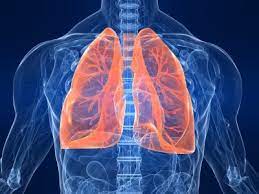Polyphosphates Play Crucial Role in Bacterial Dormancy
A groundbreaking study conducted by scientists at Scripps Research has uncovered a vital mechanism behind bacterial dormancy, shedding light on how pathogens evade antibiotics and sustain chronic infections. The research, published in the Proceedings of the National Academy of Sciences on April 2, 2024, offers insights that could revolutionize treatment strategies for stubborn infections resistant to conventional antibiotics.
Led by Lisa Racki, assistant professor in the Department of Integrative Structural and Computational Biology at Scripps Research, the study focused on understanding the role of long chains of molecules known as polyphosphates (polyP) in regulating bacterial activity. While most disease-causing bacteria are notorious for their rapid growth, they can also enter a resting state, contributing to chronic infections in various bodily sites and on medical devices.
Racki and her team delved into the function of polyP using Pseudomonas aeruginosa, a bacterium notorious for causing pneumonia and blood infections, particularly in hospitalized individuals or those with compromised immune systems. P. aeruginosa’s ability to form biofilms, dense communities of bacteria resistant to conventional antibiotics, poses a significant challenge in clinical settings.
The researchers discovered that when deprived of nitrogen, a crucial nutrient for growth, P. aeruginosa ramps up polyP production. Remarkably, mutants unable to produce polyP were unable to enter the dormant state, highlighting the pivotal role of these molecules in bacterial dormancy.
Using innovative tracking techniques, the scientists observed that without polyP, the movement of materials within the bacterial cell increased significantly. Racki explains, “When you get rid of polyP, everything in the cell moves too much. The cells are partying when they should be taking a break.”
In the absence of nitrogen and polyP, P. aeruginosa continues to move materials at an accelerated pace, leading to increased cell size, loosened genetic material, and continued division, despite nutrient deprivation.
The findings suggest that polyP is instrumental in slowing down bacterial activity during nutrient scarcity, thereby facilitating entry into a resting state. Importantly, inhibiting polyP production could render bacteria more susceptible to certain antibiotics, offering a promising avenue for treating chronic infections.
Racki’s team plans to conduct further experiments to elucidate the precise mechanisms underlying the role of polyP in bacterial dormancy and explore the potential of targeting polyP production as a therapeutic strategy.
Funded by organizations such as the National Institutes of Health, the European Research Council, and the Swiss National Science Foundation, this research marks a significant step forward in understanding bacterial behavior and combating antibiotic resistance in chronic infections.











